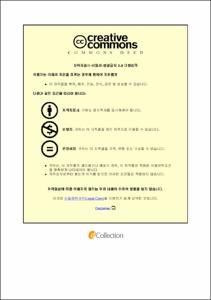Improvement of groundwater contamination vulnerability assessment using the adaptive neuro-fuzzy inference system with metaheuristic optimization algorithms
- Alternative Title
- 적응형 뉴로-퍼지와 메타휴리스틱 최적화 기법의 결합 모델을 이용한 지하수 오염취약성 평가기법의 개선
- Abstract
- This study aims to enhance the assessment of groundwater contamination-vulnerability using the adaptive neuro-fuzzy inference system (ANFIS) combined with metaheuristic optimization algorithms (MOAs) such as a genetic algorithm (GA), differential evolution (DE), and particle swarm optimization (PSO). The assessment of groundwater contamination vulnerability used two ways of the nitrate contamination and the contamination vulnerability index based on the DRASTIC assessment method. Miryang City of Gyeongsangnam-do Province in Korea was selected as a case study area since it had recently undergone groundwater nitrate pollution due to intensive agricultural and human activities. DRASTIC factors of Depth to water, net Recharge, Aquifer media, Soil media, Topographic slope, Impact to vadose zone, Hydraulic Conductivity and Land-use were transformed into numerical ratings and used as input variables of ANFIS-MOAs. Original DRASTIC vulnerability indices were calculated using 8 DRASTICL factors and their weights of hydrogeological data collected from 95 wells in the unconsolidated aquifer of the study area. The nitrate-nitrogen data (NO3-N) were also obtained from the monitoring wells, and natural log- transformed for the normal distribution. 95 DRASTIC ratings and NO3-N data were separated into 2 parts for ANFIS modeling: 70% training data and 30% testing data. The performance of ANFIS-MOAs was evaluated by several statistical evaluation criteria: mean absolute error (MAE), root mean square error (RMSE), correlation coefficient (R) and Receiver Operating Characteristic (ROC) under the curve (AUC). The testing results of the nitrate concentrations and the contamination vulnerability indices indicated that ANFIS-PSO (MAE= 0.323 ; RMSE= 0.436; R= 0.903; AUC= 0.95/ MAE = 20.752 ; RMSE = 37.670; R = 0.805 ; AUC= 0.921) implemented the more superior performance than ANFIS-DE (MAE= 0.338; RMSE= 0.464; R= 0.897; AUC= 0.912/ MAE= 23.149 ; RMSE=44.352; R=0.715; AUC=0.88), ANFIS-GA (MAE= 0.390; RMSE=0.561; R= 0.839; AUC= 0.88 / MAE=23.654 ; RMSE= 45.964; R=0.691 ; AUC= 0.865) and original ANFIS (MAE= 0.580; RMSE= 0.836; R= 0.60; AUC= 0.769/ MAE= 46.813; RMSE= 63.935 ; R= 0.468 ; AUC= 0.704) in predicting the nitrate contamination vulnerability and conditioned contamination vulnerability index, respectively. ANFIS-PSO model also exhibited very high susceptibility to the nitrate concentration and the vulnerability index maps at the area near the Nakdong River and the center of Miryang city, although other models of ANFIS showed relatively similar patterns for the spatial distribution of the highly vulnerable hotspot areas. ANFIS-GA and ANFIS-DE models were also useful for the prediction of nitrate data and the assessment of groundwater contamination vulnerability, compared to Original DRASTIC or Original ANFIS model. It is concluded that ANFIS-MOA models will also produce the excellent results in assessing groundwater contamination vulnerability in other areas of the world as well as the Miryang City of Korea.
- Issued Date
- 2020
- Awarded Date
- 2020. 8
- Type
- Dissertation
- Publisher
- 부경대학교
- Affiliation
- 부경대학교 대학원
- Department
- 대학원 지구환경시스템과학부지구환경과학전공
- Advisor
- Kye-Hun Park
- Table Of Contents
- 1. Chapter I. Introduction 1
1.1. Overview 1
1.2. Problem statement 3
1.3. Literature review of groundwater contamination-vulnerability assessment 4
1.4. Novelty and objective of the research 6
1.5. Study area 8
1.6. Nitrate nitrogen (NO3-N) 10
1.7. Intrinsic physical data 14
2. Chapter Ⅱ. Research methodology 16
2.1. Metaheuristic optimization algorithms (MOA) 16
2.1.1. Genetic algorithm (GA) 16
2.1.2. Differential evolution (DE) 21
2.1.3. Particle swarm optimization (PSO) 26
2.2. Adaptive neuro-fuzzy inference system (ANFIS) 31
2.2.1. Fuzzy inference system (FIS) 32
2.2.2. Implementation of ANFIS 34
2.3. Prediction of nitrate contamination vulnerability 40
2.3.1. Conditioning input variables 40
2.3.2. Normalization 42
2.3.3. Features selection 42
2.3.4. Nitrate inventory 43
2.3.5. Combined model of ANFIS with MOA 44
2.3.6. Performance of ANFIS-MOA models 45
2.3.7. Evaluation of model performances 46
2.3.8. Spatial distribution maps 47
2.4. Assessment of groundwater contamination-vulnerability indices 48
2.4.1. Intrinsic DRASTIC index method 48
2.4.2. Conditioned vulnerability index (CVI) 49
3. Chapter Ⅲ. Results and discussion 51
3.1. Prediction of nitrate contamination using combined ANFIS-MOA models 51
3.1.1. Thematic maps of hydrogeological layers (Input variables) 51
3.1.2. Features selection and ranking importance 57
3.1.3. Separation ratio 60
3.1.4. Sensitivity performance of ANFIS-MOA models 61
3.1.5. Optimization time of ANFIS-MOA models 64
3.1.6. Training performance of ANFIS-MOA models 65
3.1.7. Testing performance of ANFIS-MOA models 75
3.1.8. Validation of ANFIS-MOA models for nitrate contamination prediction 80
3.1.9. Ranking of models based on testing performance 82
3.1.10. Spatial distribution maps for prediction of nitrate contamination 83
3.1.11. Discussion 85
3.2. Assessment of groundwater contamination vulnerability index using ANFIS-MOA models 87
3.2.1. DRASTIC index (subjective weight) 87
3.2.2. Metaheuristic algorithm optimizations (objective weights) 88
3.2.3. Performance of ANFIS-MOA models 89
3.2.4. Validation of groundwater CVI of ANFIS-MOA models 99
3.2.5. Distribution maps of groundwater contamination vulnerability indices 100
3.2.6. Discussion 103
4. Chapter Ⅳ. Conclusions 105
5. Chapter V. Further researches 107
- Degree
- Doctor
- Appears in Collections:
- 대학원 > 지구환경시스템과학부-지구환경과학전공
- Files in This Item:
-
-
Download
 Improvement of groundwater contamination vulnerability assessment using the adaptive neuro-fuzzy inf.pdf
기타 데이터 / 7.05 MB / Adobe PDF
Improvement of groundwater contamination vulnerability assessment using the adaptive neuro-fuzzy inf.pdf
기타 데이터 / 7.05 MB / Adobe PDF
-
Items in Repository are protected by copyright, with all rights reserved, unless otherwise indicated.